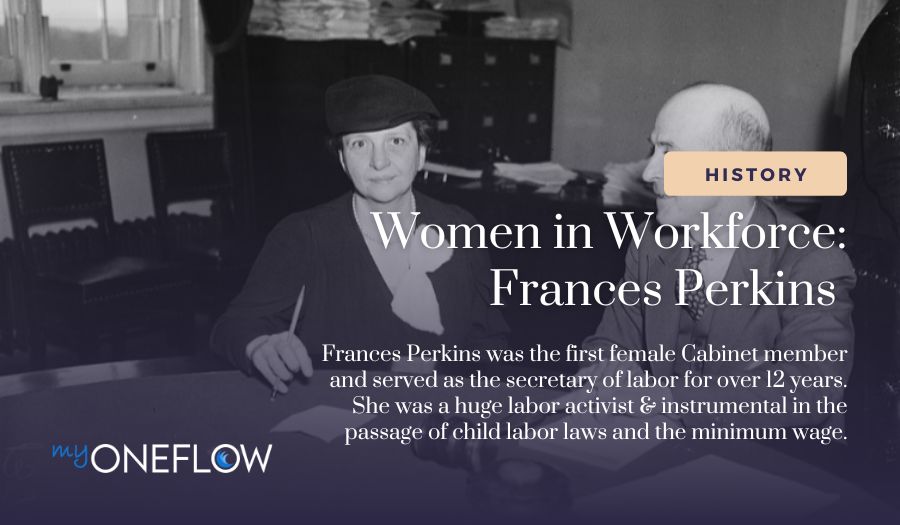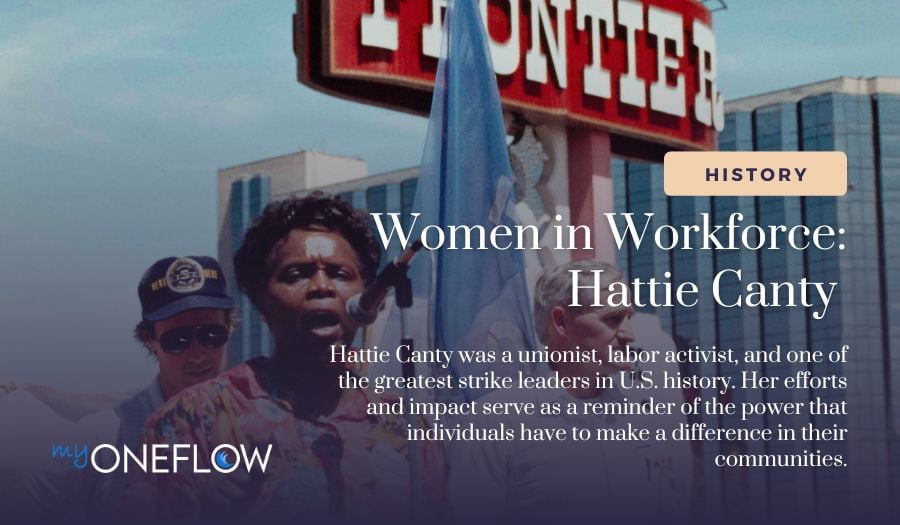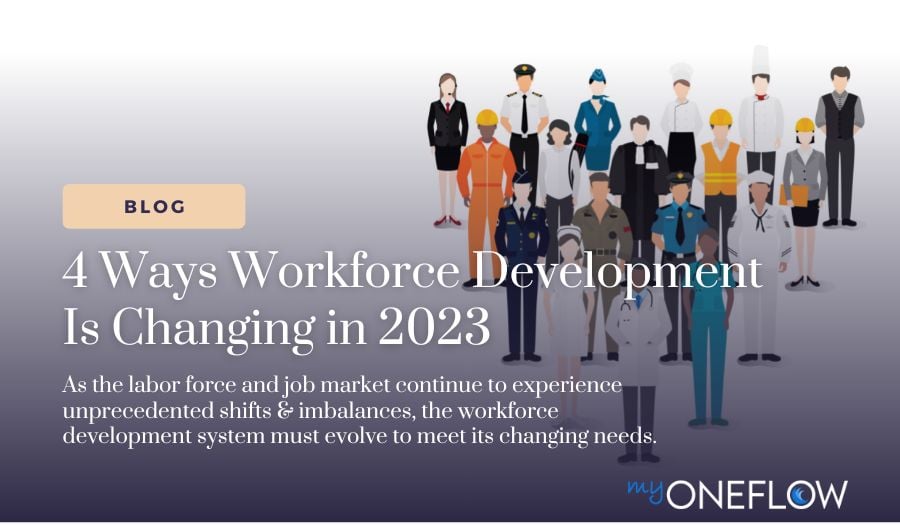Women in Workforce: Hattie Canty
This is the second installment of our Women in Workforce series, an initiative to highlight and celebrate the historical contributions of women in...

This is the first installment of our Women in Workforce series, an initiative to highlight and celebrate the historical contributions of women in workforce development and labor rights.
Frances Perkins was the first female Cabinet member and served as the secretary of labor in Franklin D. Roosevelt’s Cabinet for over 12 years. Although she was the driving force behind many worker benefits and protections we take for granted today – including the 40-hour work week, federal minimum wage, unemployment insurance, child labor laws, and Social Security – Perkins rarely gets the credit she deserves.
Frances Perkins was from a conservative, Republican family with roots in Maine. After the family’s brickyard business went bankrupt and their subsequent farming endeavors fell flat, her father moved them to Boston, Massachusetts, where Perkins was born in 1880. The family moved again in 1882 to Worcester, where her father opened a paper goods business that remains successful to this day.
Perkins enjoyed a comfortable, middle-class life and a well-rounded education as a child. Her father encouraged classical learning and early reading, teaching her Greek as a young child and enrolling her in a preparatory curriculum for high school. At the time, only 3% of women pursued higher education – but Perkins was always encouraged to go to college and enrolled at Mount Holyoke College, the nation’s oldest continuing institution of higher education for women.
Mount Holyoke focused on altruism and social good and encouraged its graduates in missionary work and teaching. Perkins’s focus while in school was on math and science, but it was an economic history course that planted the seed that would grow into her lifelong career. In class, Perkins learned about the effects of the rise of industrialism, visited local mills and factories to observe employee conditions, and interviewed workers about their experiences. She was also heavily impacted by Jacob Riis’s How the Other Half Lives, an exposé detailing daily life in the slums of New York City.
Perkins did not subscribe to the popular upper-class notion that poverty was primarily caused by drunkenness or laziness. She was deeply affected by the welfare of others and felt convicted to do what she could to improve working conditions and alleviate poverty.
“I had to do something about unnecessary hazards to life, unnecessary poverty.”
Perkins graduated from Mount Holyoke College as class president in 1902. Over the next eight years, she served impoverished and disadvantaged populations through various roles, including teacher, social worker at Chicago’s Hull House, and secretary of the Philadelphia Research and Protective Association. She continued her education at the University of Pennsylvania and Colombia University, obtaining a master's degree in social economics from Colombia in 1910.
In 1911, Perkins witnessed firsthand the Triangle Shirtwaist Fire. She watched in horror as almost 50 employees, mostly young women, jumped to their deaths from the 8th and 9th floors of the burning factory. Nearly 150 people were killed in total. The tragedy further fueled Perkins’s passion for workers’ rights and was a catalyst for labor reform in New York City.
For the next two decades, Perkins stayed heavily involved in social work, activism, and lobbying in New York. She advanced into the upper echelons of state labor politics, working for organizations such as the Consumers’ League of New York, the New York Committee on Safety, and the New York Council of Organization for War Service. In 1919, Governor Al Smith appointed her to New York’s State Industrial Commission, making Perkins the highest-paid woman to hold public office in the United States.
Franklin D. Roosevelt was elected governor of New York in 1928 and promptly appointed Perkins the state’s Industrial Commissioner, marking the beginning of their political allyship.
In 1929, the stock market crashed, and unemployment soared, sending the United States plummeting into the decade-long Great Depression. When President Hoover assured the nation in 1930 that the economy was improving and unemployment was decreasing, Perkins made the news by calling a press conference and publicly disagreeing with the president.
“It is cruel and irresponsible to issue misleading statements of improvement in unemployment, at a time when the unemployed are reaching the end of their resources."
By the time FDR was elected president in 1932, Perkins already had a long and impressive career in labor reform and activism and a well-established relationship with the president-elect. When he asked her to serve on his Cabinet as the secretary of labor, she accepted on the stipulation that he back her on some non-negotiable agenda items. These included a 40-hour work week, federal minimum wage, unemployment insurance, child labor laws, Social Security, and universal health care. The president agreed, and their three-term partnership began.
Perkins is often known today as "the woman behind the New Deal," thanks to her immense influence in creating and implementing many New Deal programs. Most notably, she helped draft the Social Security Act and the Fair Labor Standards Act, which included provisions for a federal minimum wage, a cap on weekly work hours, and child labor laws. She was also a driving force behind many other programs and organizations during the 12 years of Roosevelt’s presidency.
Perkins resigned from her position mere months after FDR’s death in April 1945. The only item she did not accomplish from her original agenda as secretary of labor was universal health care. She served her last stint in politics under the Truman administration as a civil service commissioner from 1946 until 1953. After she retired from government, Perkins spent the rest of her life teaching, writing, and lecturing until her death in May 1965.
Frances Perkins’s legacy lives on today through the countless workers’ protections she helped implement and the women she has inspired.
--
Sources:
https://francesperkinscenter.org/life-new/
https://www.britannica.com/biography/Frances-Perkins
https://www.fdrlibrary.org/perkins
https://www.ssa.gov/history/fpbiossa.html

This is the second installment of our Women in Workforce series, an initiative to highlight and celebrate the historical contributions of women in...

The labor movement has been a vital force in advocating for the rights and well-being of workers since its inception during the Industrial...

The U.S. workforce has experienced rapid change since the onset of the pandemic in 2020. Between the transition to virtual/hybrid work, the immense...